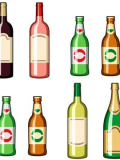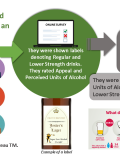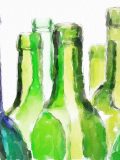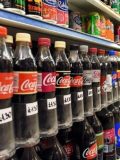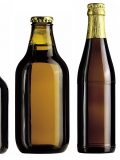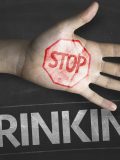Our research about alcohol
Our alcohol research focuses on how features of the environment might consciously or unconsciously influence the amount of alcohol we drink. We assess whether interventions to reduce the amount we drink are likely to be effective, and whether people would support these interventions.
Click on the images below to find out more about the work we have been doing in this area.
Key Studies:
Pregnant women, sportspeople and those aged 6-13 years old were perceived as the target groups for products labelled with 0%ABV or the verbal descriptors Low or Super Low. Men, women, and those aged above 18 were perceived as the target groups for products labelled with higher %ABV. Participants also perceived the products labelled with 0%ABV or the verbal descriptors Low or Super Low as targeting consumption on weekday lunches, whereas products labelled with higher %ABV were rated as targeting dinner/evening occasions, including parties, holidays and celebrations. Lower strength products were therefore seen as targeting non-traditional consumers (pregnant women) and occasions (weekday lunchtimes), suggesting these products may be perceived as extensions to regular strength alcoholic drinks rather than as substitutes for them. What are the perceived target groups and occasions for wines and beers labelled with verbal and numerical descriptors of lower alcohol strength? An experimental study. BMJ Open. Vasiljevic M, Couturier DL, Marteau TM. Products labelled with verbal descriptors denoting lower alcohol strength (Low and Super Low) had less appeal than Regular (average) strength products. Furthermore, appeal decreased as the %ABV shown on the label decreased. Understanding of strength was generally high across the various drinks with drinkers’ understanding of strength being better for drinks labelled lower in strength. What does the public think are the ‘target groups’ and ‘occasions’ for lower strength wines and beers?
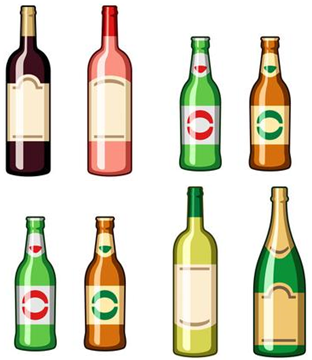 The development and promotion of lower strength alcohol products may help reduce alcohol consumption and associated harms at the population level. 3,390 weekly wine and beer drinkers sampled from a nationally representative UK panel participated in an experiment in which they were randomised to see different wines and beers labelled with different verbal descriptors denoting lower alcohol strengths, with or without a number denoting the percentage alcohol by volume (%ABV). Participants then reported their perceptions of the type of person that would find the drink they had been randomised to see appealing and the type of occasion on which it was likely to be drunk.
The development and promotion of lower strength alcohol products may help reduce alcohol consumption and associated harms at the population level. 3,390 weekly wine and beer drinkers sampled from a nationally representative UK panel participated in an experiment in which they were randomised to see different wines and beers labelled with different verbal descriptors denoting lower alcohol strengths, with or without a number denoting the percentage alcohol by volume (%ABV). Participants then reported their perceptions of the type of person that would find the drink they had been randomised to see appealing and the type of occasion on which it was likely to be drunk.How do regular drinkers perceive wines and beers labelled as lower in strength?
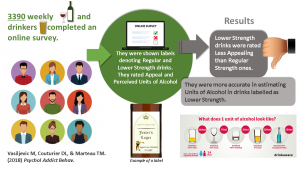 In a sample of 3,390 weekly wine and beer drinkers we assessed the impact of labelling wine and beer with different verbal descriptors denoting lower strength, with and without %ABV, on product appeal and understanding of strength.
In a sample of 3,390 weekly wine and beer drinkers we assessed the impact of labelling wine and beer with different verbal descriptors denoting lower strength, with and without %ABV, on product appeal and understanding of strength.
Impact on product appeal of labeling wine and beer with (a) lower strength alcohol verbal descriptors and (b) percent alcohol by Vol. (%ABV): An experimental study. Psychology of Addictive Behaviors. Vasiljevic, M., Couturier, D.-L., & Marteau, T. M. (2018).
Marketing messages accompanying online selling of low/er and regular strength wine and beer products in the UK: A content analysis. Vasiljevic M, Coulter L, Petticrew M, Marteau TM, 2018 The present findings add to a small existing literature that highlights how measures intended to benefit public health (in this case wider availability of lower strength alcohol products) may benefit industry to the detriment of the health of the public. Impact of lower strength alcohol labeling on consumption: A randomized controlled trial. Vasiljevic M, Couturier DL, Frings D, Moss AC, Albery IP, Marteau TM, 2018 This study looked at how increasing the price of non-alcoholic drinks could influence purchases of alcoholic drinks, such as beer, wine and cider, in supermarkets. We found that increasing the price of sugary drinks could increase purchases of lager, while increases in the price of diet drinks could increase purchases of beer, cider and wines. Effect of increasing the price of sugar-sweetened beverages on alcoholic beverage purchases: an economic analysis of sales data. Quirmbach, Cornelsen, Jebb, Marteau, Smith, 2018. We examined consumers’ perceptions of strength (%ABV) and appeal of alcohol products using low/high verbal descriptors. Verbal descriptors of lower strength wine and beer formed two clusters and effectively communicated reduced alcohol content. The verbal descriptors Low, Lower, Light, Lighter, and Reduced formed a cluster and were rated as denoting lower strength products than Regular, but higher strength than the cluster with intensifiers consisting of Extra Low, Super Low, Extra Light and Super Light. Similar clustering in perceived strength was observed amongst the high verbal descriptors. Regular was the most appealing strength descriptor, with the low and high verbal descriptors using intensifiers rated least appealing. Impact of low alcohol verbal descriptors on perceived strength: An experimental study. Vasiljevic, Couturier, Marteau, 2017. In this collaboration with colleagues from the London School of Hygiene and Tropical Medicine and the UCL Institute of Education among others, we put forward the case for a systems perspective of the relationship between alcohol advertising, advertising restrictions, and alcohol consumption. A systems-level analysis would consider findings from multiple systematic reviews alongside the broader evidence base to understand how alcohol advertising fits into a complex web of interrelated factors (the ‘alcohol system’) contributing to alcohol consumption. Alcohol advertising and public health: systems perspectives versus narrow perspectives. Petticrew, Shemilt, Lorenc, Marteau, Melendez-Torres, O’Mara-Eves, Stautz, Thomas, 2017. In an online pilot study of 152 young adult drinkers, we found that This effect was fully explained by displeasure felt in response to the warning adverts, indicating that media campaigns that can produce negative affect about the health consequences of alcohol use can reduce the desire to drink. Viewing alcohol warning advertising reduces urges to drink in young adults: an online experiment. Stautz, Marteau, 2016. In a systematic review and meta-analysis of randomized, experimental studies, we found that participants who viewed alcohol advertising consumed more alcohol after viewing than those who viewed non-alcohol advertising; equivalent to between 0.39 and 2.67 alcohol units for males and between 0.25 and 1.69 units for females. This was based on combining results from seven studies. We did not find evidence that viewing alcohol portrayals in TV programmes or films led to increased drinking, based on combining results from six studies. These results lend some qualified support to the public health case for restrictions, bans, or other policies that would reduce exposure to alcohol advertising on visual broadcast media to reduce alcohol consumption. Immediate effects of alcohol marketing communications and media portrayals on consumption and cognition: a systematic review and meta-analysis of experimental studies. Stautz*, Brown*, King, Shemilt, Marteau, 2016. (* = joint first authors) S In this set of bar studies, we found that increasing the size of wine glasses led to an almost 10% increase in wine sales for some comparisons between smaller and larger glasses. However, we did not see significant differences for some other comparisons between glasses of different sizes. BAR STUDY 1 Does wine glass size influence sales for on-site consumption? A multiple treatment reversal design. Pechey, Couturier, Hollands, Mantzari, Munafò, Marteau, 2016. BAR STUDY 2 Wine glass size and wine sales: a replication study in two bars. Pechey, Couturier, Hollands, Mantzari, Zupan, Marteau, 2017. In an earlier study looking at people’s perceptions of the amount of wine in different glasses, we found that the same amount of wine was seen as less in larger compared to smaller glasses, and in narrower compared to wider glasses, for larger portions of wine. Does Glass Size and Shape Influence Judgements of the Volume of Wine? Pechey, Attwood, Couturier, Munafò, Scott-Samuel, Woods, Marteau, 2015. How are lower strength wine and beer products marketed online?
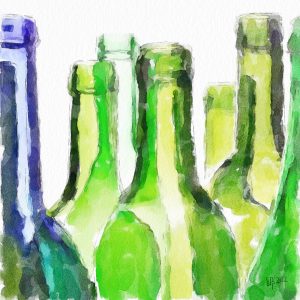 The current study compared the main marketing messages conveyed by retailers and producers for low/er and regular strength wine and beer products in the UK. Compared with regular strength wines and beers, low/er strength products were more often marketed in association with occasions deemed to be suitable for their consumption including lunchtimes, outdoor events/barbeques, or on sports and fitness occasions. Furthermore, compared with regular strength wines and beers, low/er strength equivalents were more frequently marketed with images or text associated with health.
The current study compared the main marketing messages conveyed by retailers and producers for low/er and regular strength wine and beer products in the UK. Compared with regular strength wines and beers, low/er strength products were more often marketed in association with occasions deemed to be suitable for their consumption including lunchtimes, outdoor events/barbeques, or on sports and fitness occasions. Furthermore, compared with regular strength wines and beers, low/er strength equivalents were more frequently marketed with images or text associated with health.What is the impact of labelling wine and beer as lower in alcohol strength?
 The aim of the present study was to assess the impact of lower strength alcohol labelling on consumption. We found that the total amount of wine and beer consumed increased as the label on the drink denoted successively lower alcohol strength.
The aim of the present study was to assess the impact of lower strength alcohol labelling on consumption. We found that the total amount of wine and beer consumed increased as the label on the drink denoted successively lower alcohol strength.Would increasing the price of sugary soft drinks influence purchases of alcohol?
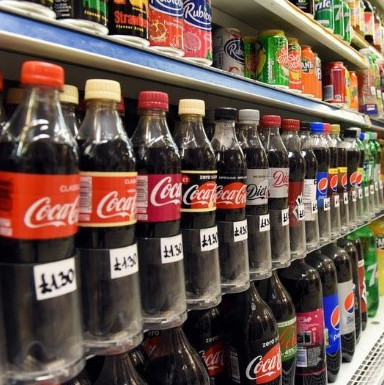 The UK Government levy on sugary drinks producers began in April 2018, potentially influencing the cost of a large range of non-alcoholic beverages.
The UK Government levy on sugary drinks producers began in April 2018, potentially influencing the cost of a large range of non-alcoholic beverages.Does labelling wine and beer as high or low alcohol affect perceptions of their strength?
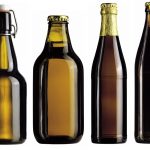
Are we taking too narrow a view on the impact of alcohol advertising?
 There is currently limited, low quality evidence on whether restrictions on alcohol advertising have an impact on alcohol consumption. Focusing only on this evidence could lead to poorly informed policy decisions based on a narrow understanding of how alcohol advertising influences alcohol use.
There is currently limited, low quality evidence on whether restrictions on alcohol advertising have an impact on alcohol consumption. Focusing only on this evidence could lead to poorly informed policy decisions based on a narrow understanding of how alcohol advertising influences alcohol use.Do alcohol warnings reduce urges to drink?
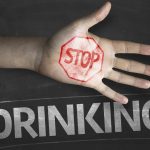 those who had been randomized to view alcohol warning adverts reported reduced urges to drink alcohol compared to those randomized to view either alcohol promoting or non-alcohol adverts.
those who had been randomized to view alcohol warning adverts reported reduced urges to drink alcohol compared to those randomized to view either alcohol promoting or non-alcohol adverts.Does alcohol marketing influence drinking?
 Restricting alcohol marketing is suggested to be a cost-effective policy option to reduce alcohol consumption. There is debate as to whether alcohol marketing exposure leads to increased drinking.
Restricting alcohol marketing is suggested to be a cost-effective policy option to reduce alcohol consumption. There is debate as to whether alcohol marketing exposure leads to increased drinking.Does wine glass size influence consumption?
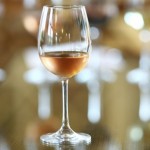 elling wine in larger-sized wine glasses may encourage people to drink more, even when the amount of wine served remains the same.
elling wine in larger-sized wine glasses may encourage people to drink more, even when the amount of wine served remains the same.
Publications relating to alcohol:
2019
2018
2017
2016
2015
2014
2013

